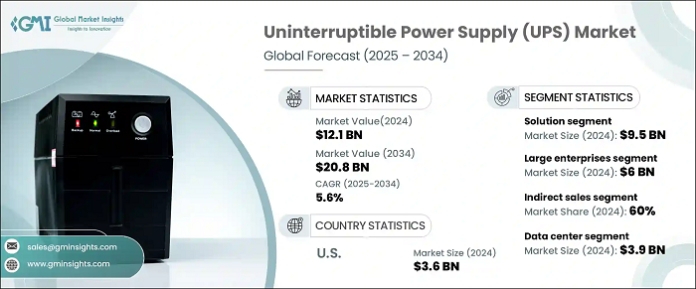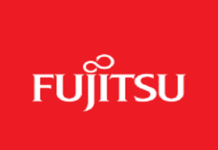
The global Uninterruptible Power Supply (UPS) market stands at the threshold of unprecedented expansion, with industry analysts projecting the market will surge beyond $20.8 billion by 2034. This remarkable growth trajectory reflects a fundamental shift in how businesses, institutions, and consumers approach power reliability in an increasingly digital-dependent world.
The Digital Transformation Catalyst
The accelerating pace of digital transformation across industries has created an insatiable demand for reliable power infrastructure. As organizations migrate critical operations to cloud-based systems, implement Internet of Things (IoT) devices, and rely heavily on data centers, the cost of power interruptions has skyrocketed. A single minute of downtime can cost enterprises thousands of dollars, making UPS systems not just a luxury but an essential component of modern business continuity strategies.
Data centers, the backbone of our digital economy, represent one of the most significant drivers of UPS market growth. With the explosive growth of cloud computing, artificial intelligence applications, and big data analytics, these facilities require increasingly sophisticated power protection solutions. The shift toward edge computing has further amplified this demand, as smaller, distributed data centers proliferate across urban and suburban areas to reduce latency and improve service delivery.
Healthcare Sector: A Critical Growth Engine
The healthcare industry has emerged as a particularly robust driver of UPS market expansion. Modern medical facilities depend on an intricate network of life-support systems, diagnostic equipment, and electronic health records that cannot tolerate power disruptions. The COVID-19 pandemic underscored the critical importance of reliable power infrastructure in healthcare settings, accelerating investments in comprehensive UPS solutions.
Hospitals are increasingly implementing modular UPS systems that can scale with their growing technological needs while providing redundant protection for critical care areas. The integration of renewable energy sources in healthcare facilities has also created demand for more sophisticated UPS systems capable of managing complex power flows between grid power, solar installations, and battery backup systems.
Technological Innovation Reshaping the Landscape
The UPS market is experiencing a technological renaissance that extends far beyond traditional battery backup systems. Lithium-ion battery technology has revolutionized the industry, offering superior energy density, longer lifecycles, and reduced maintenance requirements compared to conventional lead-acid batteries. These advancements have made UPS systems more attractive to a broader range of applications, from residential solar installations to large-scale industrial operations.
Smart UPS systems incorporating advanced monitoring and predictive maintenance capabilities are transforming how organizations manage their power infrastructure. These intelligent systems can anticipate potential failures, optimize battery performance, and provide detailed analytics on power quality and usage patterns. The integration of artificial intelligence and machine learning algorithms enables predictive maintenance strategies that minimize unexpected downtime while extending equipment lifecycles.
Geographic Markets and Regional Dynamics
North America continues to dominate the global UPS market, driven by the concentration of major technology companies, extensive data center infrastructure, and robust healthcare systems. However, the Asia-Pacific region is experiencing the fastest growth rates, fueled by rapid industrialization, urbanization, and massive investments in digital infrastructure across countries like China, India, and Southeast Asian nations.
Europe presents a unique growth opportunity as the region pursues aggressive renewable energy targets and implements stringent regulations on power quality and reliability. The European Union’s focus on energy security and grid modernization has created substantial demand for advanced UPS solutions that can integrate seamlessly with renewable energy sources and smart grid technologies.
Emerging markets in Latin America, Africa, and the Middle East are contributing significantly to global growth as these regions develop their technological infrastructure and experience increasing power grid instability. The need for reliable power backup solutions in these markets often exceeds that of developed nations due to less reliable grid infrastructure.
Industry Challenges and Opportunities
Despite the optimistic growth projections, the UPS market faces several significant challenges. Supply chain disruptions, particularly in semiconductor and battery component availability, have impacted manufacturing timelines and costs. The industry must also navigate evolving environmental regulations and increasing pressure to develop more sustainable solutions with reduced carbon footprints.
The transition toward renewable energy sources presents both challenges and opportunities for UPS manufacturers. While renewable integration creates demand for more sophisticated power management systems, it also requires UPS solutions that can handle variable power inputs and complex grid interactions. Companies that successfully develop products addressing these challenges will capture significant market share in the coming decade.
Future Market Trajectory
The path to $20.8 billion by 2034 will be shaped by several key trends. Modular and scalable UPS solutions will gain increasing market share as organizations seek flexible systems that can grow with their needs. The integration of energy storage capabilities beyond traditional backup power, including peak shaving and grid services, will create new revenue streams and value propositions.
Sustainability will become an increasingly important differentiator, with manufacturers focusing on recyclable materials, improved energy efficiency, and integration with renewable energy sources. The development of hydrogen fuel cell UPS systems and other alternative technologies may create new market segments and competitive dynamics.
The convergence of UPS technology with broader energy management systems, smart building technologies, and grid modernization initiatives will expand the total addressable market beyond traditional backup power applications. Organizations will increasingly view UPS systems as integral components of comprehensive energy strategies rather than standalone backup solutions.
Conclusion
The projected growth of the UPS market to $20.8 billion by 2034 represents more than numerical expansion; it reflects the critical role that reliable power infrastructure plays in our interconnected, digital world. As businesses, healthcare institutions, and consumers become increasingly dependent on continuous power availability, UPS systems will continue evolving from simple backup solutions to sophisticated energy management platforms that enable the reliable, efficient operation of modern society’s critical infrastructure.
Source: https://www.gminsights.com/industry-analysis/ups-market














